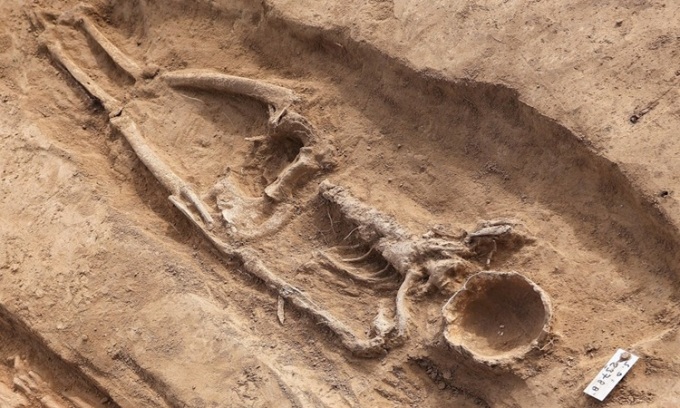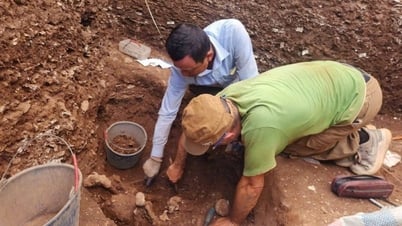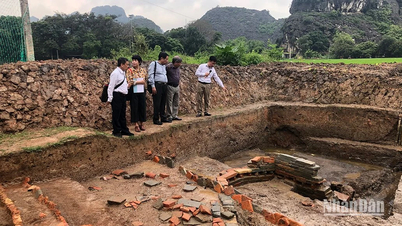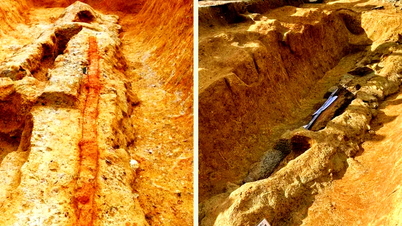Archaeologists have discovered the remains of a woman with no facial bones who lived 1,000 years ago and was buried next to her aristocratic husband.

The "faceless" skeleton of a German noblewoman who lived in the 9th century. Photo: Jan Woitas/dpa
The remains of a man and woman buried side by side in Germany surprised archaeologists when they discovered the skull of one skeleton was completely hollow. The archaeologists made the unusual discovery while excavating near the 1,000-year-old royal palace of the Roman emperor Otto the Great (also known as Otto I) in Helfta, a village in the German state of Saxony-Anhalt, Live Science reported on November 28.
The two skeletons were buried directly next to each other, suggesting they were probably a married couple, said Oliver Dietrich, a researcher at the Institute of Archaeology in Berlin in Germany and a member of the excavation team. The woman was slightly shorter than the man, about 1.55 meters tall. What most interested the team was the lack of facial bones. However, further analysis revealed that the skull was not hollowed out but destroyed later because the grave was quite shallow, lying directly under the topsoil.
The woman's skull was damaged by external influences, such as a plow or small animals that built burrows in the grave, according to Felix Biermann, professor of archaeology at the University of Szczecin, Poland.
The man was buried with a number of burial objects, including iron tools such as knives and belts, suggesting he may have been a nobleman at the time of his death. The team concluded that the man lived in the 9th century and was an official in a Frankish castle or fortress that existed at the time. Since he was buried without weapons, he is more likely to have been an official than a soldier. In contrast, the woman’s remains were not accompanied by any burial objects, possibly because they had been stolen in the past.
An Khang (According to Live Science )
Source link







































































































Comment (0)